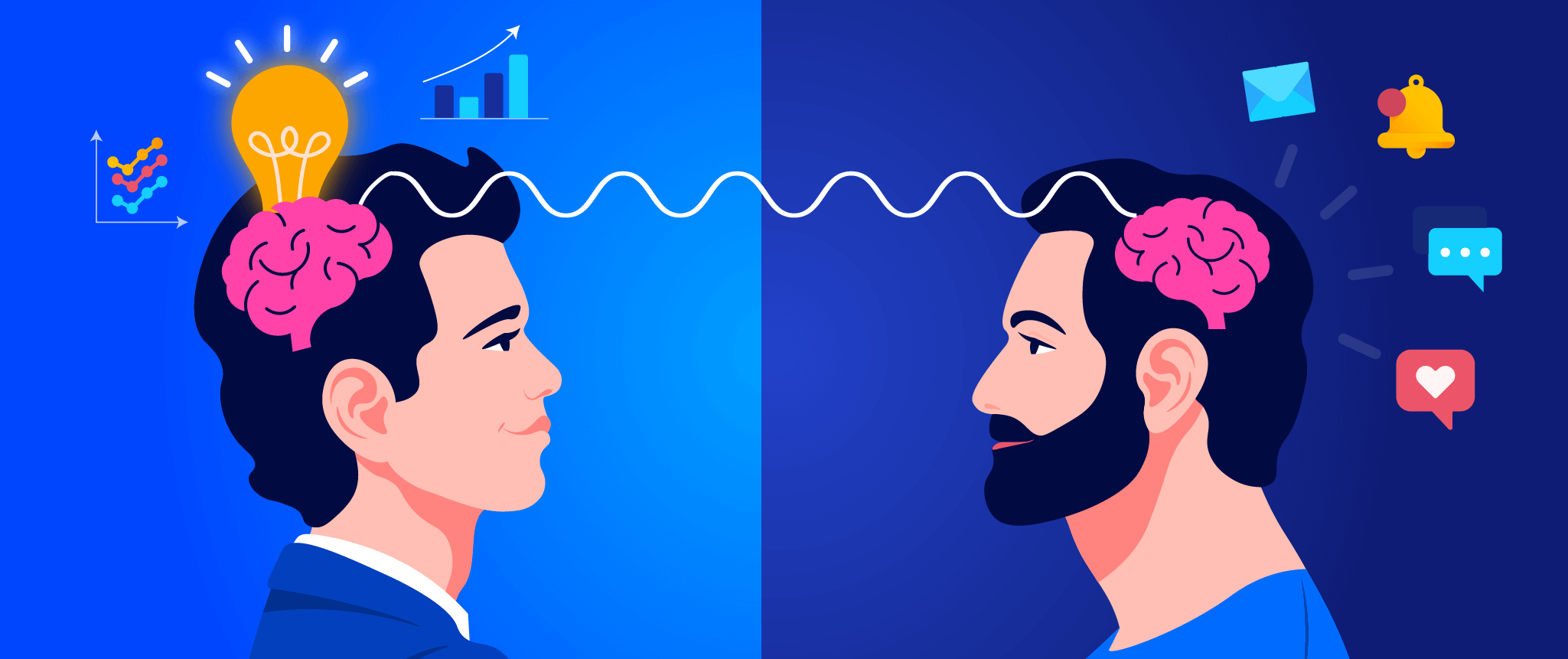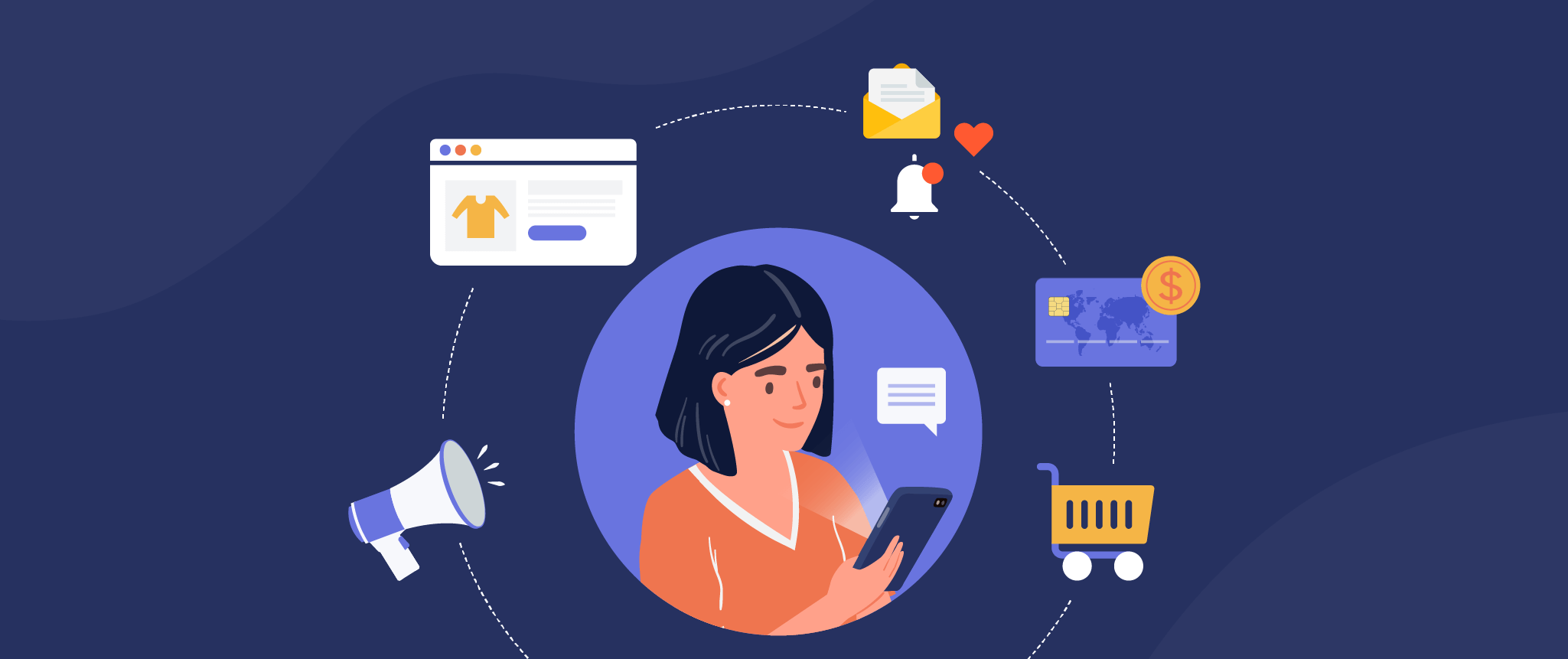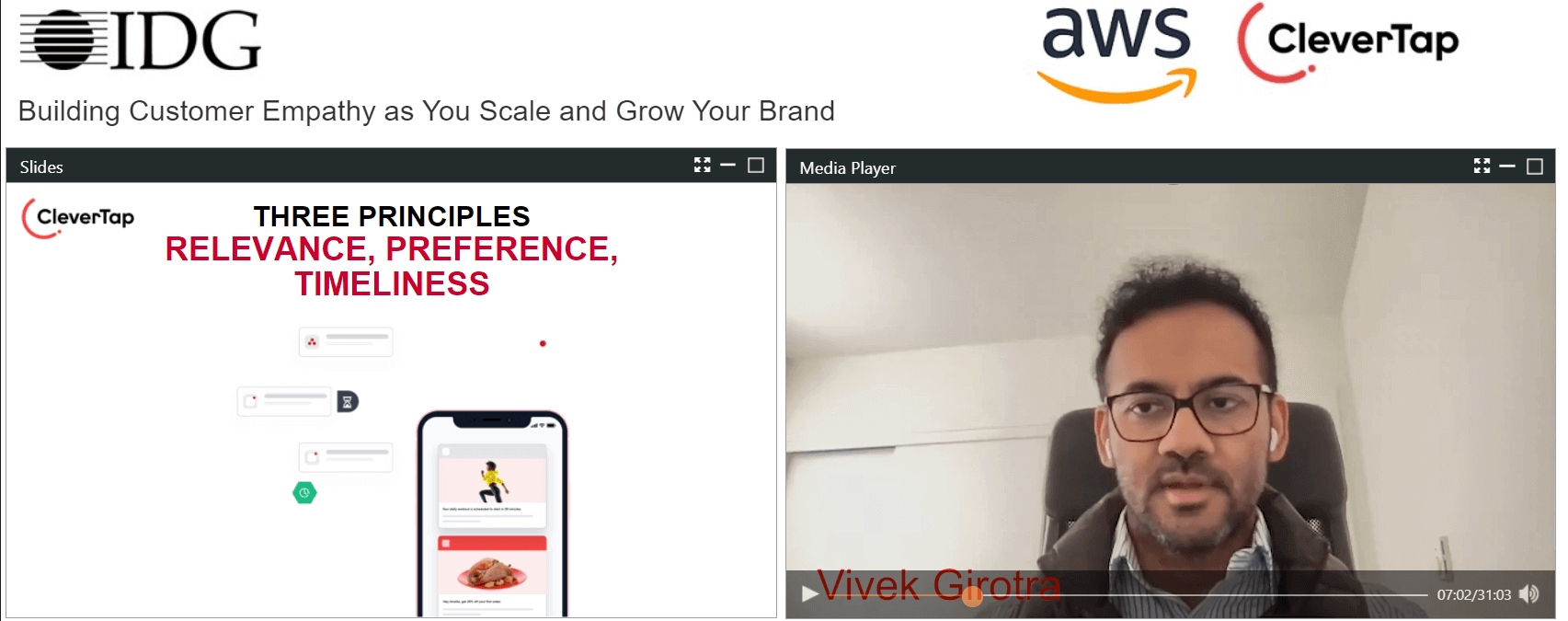How can marketers adapt and individualize the customer journey based on a deep understanding of consumers’ habits and behaviors? And how will using these journeys in omnichannel campaigns deliver value, demonstrate empathy, and build trust with customers?
We recently held an interactive panel discussion bringing together experts to talk about growing your company while building empathy for the customer. The session was facilitated by Aaron Goldberg, contributing editor for IDG, and featured CleverTap’s own Daniele Di Nunzio, Director-Sales, Americas at CleverTap, alongside Vivek Girotra, VP of Growth Marketing at Times Internet, and Larry Geller, Digital Customer Experience Segment Lead at Amazon Web Services (AWS).
Below, we present the highlights of the discussion along with some insightful takeaways. Or you can rewatch the webinar recording here.
Empathy: Earn the Trust of Customers By Being Human
Empathy — that capacity to understand what someone else is going through — is a much needed element in successful marketing today. With consumers still reeling from the effects of a global pandemic, it’s now more necessary than ever if you want to earn customer trust, and build a relationship that is long term.
But empathy is not just about connecting on an emotional level with your customers. It isn’t just about strategies to use so your app users keep on engaging with your content. Rather, it is all about giving them experiences that they want — experiences tailored to their needs and their preferences.
In the end, it’s a mindset that is valuable for your brand’s longevity because it places the focus on the needs of your target audience.
Don’t Be Intrusive or Irrelevant
The first roadblock that marketers face though is customer annoyance. Many consumers are constantly annoyed at intrusive or irrelevant digital marketing tactics. How does a brand deal with that?
- Be respectful of consumer preferences. This is easier said than done, because all marketers have retention metrics to hit. It’s always tempting, as a product owner, to bombard our users with communications to hit those target retention metrics. But we need to understand what the customer wants.
Vivek Girotra shares that he encountered a recent app that would continuously send emails, and to top it off, the unsubscribe button wouldn’t work! It may have worked to increase engagement in the short term, but it created a bad impression of the brand in the customer’s mind. And users end up leaving a negative review in the App Store, warding potential users away because of it. And that’s just one way a brand can fail to respect their customers’ needs. - Have the right software in place to monitor and measure how consumers are responding to different features that you implement in your product and tactics that you use to market it.
With the right tools, you can see if customers are hitting the unsubscribe buttons on your emails, or are opting out of your push notifications right after you send them. This early warning system can help ensure that marketing keeps from crossing the line when it comes to tactics.
- In addition, you can ensure you’re not sending an annoying campaign by filtering every tactic through these three questions:
- WHAT do we need in order to provide a relevant experience that does not annoy customers?
- WHY do we need that?
- How do we ASK them nicely?
BONUS TIP: Don’t forget that sometimes just sending a quick survey will help you understand better what a consumer wants and needs from your company.
Context and Relevance are the Future of Customer Engagement
How does understanding the customer’s context help improve the overall customer experience? And why is context so important to providing marketing that is relevant?
The best way to approach this is from first principles. Before launching a marketing campaign, let your team answer these questions:
- Is this relevant to the customer?
- What is the best way to communicate this message?
- What is the best time to talk about this?
Depending on your product, your customer profile, or your users’ behavior, the answers will be drastically different.
Context Leads to Engagement
Girotra shares: “When I was in Machine Zone, an agency where I used to handle the agency duties for DoorDash, we connected with Facebook’s Dynamic Product Ads (DPA) and combined the data with DoorDash’s internal user behavior. So keeping a user’s food preferences and their order behavior in mind, we could show the user ads or retargeting campaigns that fit their preferences.” Thus, meat eaters who typically ordered takeout in the evenings would receive food options featuring the latest meat dishes from local restaurants at 6:00 PM. Instant relevance for the users. And because it’s personalized, it resulted in greater engagement.
But… Orchestrate Things Correctly
This leads to the next layer of context. That of orchestration — sending customers the right offer at the right time and on the right channel. Tailoring offers to the mobile experience at the right moment for the user will always be more effective than a generic blast at an hour that’s convenient for the marketer. You have to move away from a one-size-fits-all, larger segmentation technique to more micro segmentations. Slice your audience down to logical groupings so that your communications are more personalized.
All of this comes together into a relevant and contextual message that a customer can appreciate. With the end result being more trust given to your brand.
With So Much Noise, Omnichannel is the Way
One look at our own habits throughout the day is enough to tell you this is true for your app users as well: we’re all constantly context switching. Ordering food, checking our stock portfolio, researching a TV show that our friend recommended, before going back to a Slack channel to follow up on something for work. Brands have to compete with this information overload every day.
“It’s very, very hard for us to reach the people at the right time and stand out,” says Girotra.”That is one reason why an omnichannel strategy is really important.”
You must give them the ability to switch between channels and devices at whim and still access your brand in a consistent manner. Or else you flush opportunities down the drain.
For omnichannel to work, you have to figure out what touchpoints are available to you. A pure app product will obviously have slightly less touchpoints, as opposed to if your product is cross-platform, giving you multiple options for you to talk to your customer.
If you’re able to tie it all together in a holistic customer experience, you’ll delight customers and give them the desire to keep coming back.
Larry Geller explains: “During the early days of COVID, brands were giving customers a tone-sensitive way for them to interact online, do their shopping online, and then go and pick up in store. And one of the things I found really compelling about this is that customers are happy to give out their location data if it is tied to that holistic omnichannel experience so that when they drive up to the store, the store knows they’re coming in and their order is ready.”
Read More: What is Omnichannel Marketing? Examples & Strategies
3 Tips for Using AI to Enhance Omnichannel Efforts
Another big part of improving the customer experience is using Artificial Intelligence (AI) and machine learning tools to help speed up the back end and optimize campaigns. But does it really help? Or is it just another annoyance that customers have to deal with?
Girotra, who has been working on an app that uses both AI bots and live humans to answer customer queries, shares three tips for customer-facing channels: “First, make it clear to the customer that they are working with a bot. So expectations are aligned and they understand there is going to be a limited feature set that they will be able to deal with.”
“Second, have a feature to escalate. Because there’s nothing worse than having the customer engage in circular conversations with a bot. I personally hate that as well.
“And the third is, have 24/7 support available. At this point, customers have this expectation of instant gratification, instant responses. Making sure that there is an avenue for people to get support at any given point of time, is just super important.”
Additionally, AI and machine learning are the key to hyper personalization micro segmentation. DiNunzio says: “One very quick example is CleverTap’s RFM analysis — a segmentation technique that is based on recency, frequency, and monetary value of each one of the users. Super easy. One click, and you get 10 buckets of hyper segmented users in just a few seconds. Without that, it took days of tedious manual work to get this data to the marketing team. Using AI like this is key especially when you’re growing and want to be relevant with a big user base.”
Balancing Personalization with Data Privacy
Girotra says: “For a long time, a lot of marketers and product people were getting away with murder in terms of tracking a lot of extra information, and selling that data. And nothing was revealed to the user. In the last year or two, the pendulum is shifting in the other direction with Apple deprecating the IDFA, and lots of companies and users getting very wary about tracking what information about the customer is being disseminated.”
“I’m hopeful that, at some point in the next year or so, we reach this middle point where we are able to communicate this value exchange to the customer saying: If you consent to give us your information, we will keep it securely, we’ll honor the sanctity of it, we will not sell it to people without your consent. And this actually enables you to receive more relevant and targeted ads, and help us to create a better experience for you.”
Geller says: “It’s about unlocking value. That consent you get from a consumer is really tied to the value. And to your point, I think there’s gonna be some short term losses, but long term gains. If you look at the example of “buy online and pick up in store,” you ask the average consumer, would you give up your location data right now? Most would say no. But if you say would you give up your location data so I can get your order ready and have adjacent offers ready for you when you arrive at the store? It’s tied to a value exchange. I think privacy sensitivity is really a form of advanced personalization.”
Best Practice That Helps Deliver Next-Generation Customer Experience
Geller shares: “Tone sensitivity across channels in the digital world is incredibly important. If someone calls a rental car company, and they have this terrible experience, they should not get a very happy outbound email 10 seconds later — because it’s uncoordinated! So going back to that concept of orchestration, really being tone sensitive with your customers, and keep the customer base happy.”
Girotra says: “Data hygiene is just so important. Making sure that you have all your data points in place, they’re correctly labeled, you have all the concern for the data you collect, making sure you’re tracking all the right behaviors, you’re able to deliver the accurate insights that you need to actually understand what is going on in your product. What are going through the minds of the customer? I think that half the battle is one once you have all the data points in place, and then we can build on top of it.”
DiNunzio says: “The single most important keyword that we use is retention. Retention means a shift from an acquisition-first world to ‘Let’s delight my user that I have acquired with a lot of money and let’s increase lifetime value.’ Retention encompasses a little bit of everything we’ve said so far in the previous questions: delight and respect users, make your brand a trustworthy source of information, and ultimately provide the best experience possible for them.”
Solve for Customer Empathy, Solve for Growth
In the end,customer empathy is about understanding customers and using tools to get into their minds and comprehend what makes them buy, or click through, or uninstall. If you have the right tools in place, you’ve got a system that will allow your brand to scale.
Rewatch the webinar recording here. Or click the screenshot below.
Learn More About Empathy
- Empathy at Scale: How Our Customers Are Connecting With Their Users [Video Series]
- Empathy Marketing: Connecting With Customers By Providing Value
- The 10 Golden Rules of Engagement from Today’s Most Successful Marketers

The Experience Optimization Pocket Guide
Shivkumar M 
Head Product Launches, Adoption, & Evangelism.Expert in cross channel marketing strategies & platforms.
Free Customer Engagement Guides
Join our newsletter for actionable tips and proven strategies to grow your business and engage your customers.















































